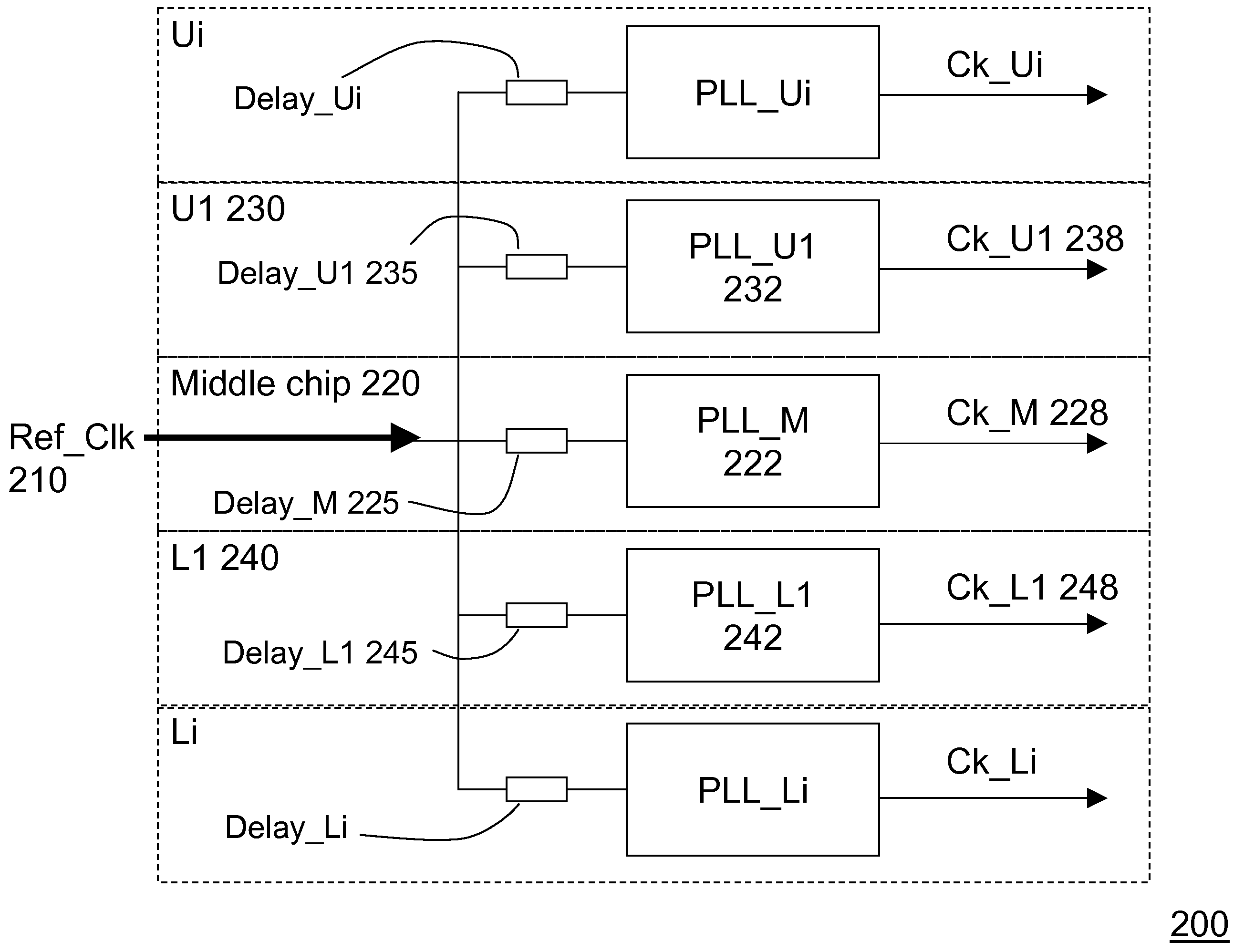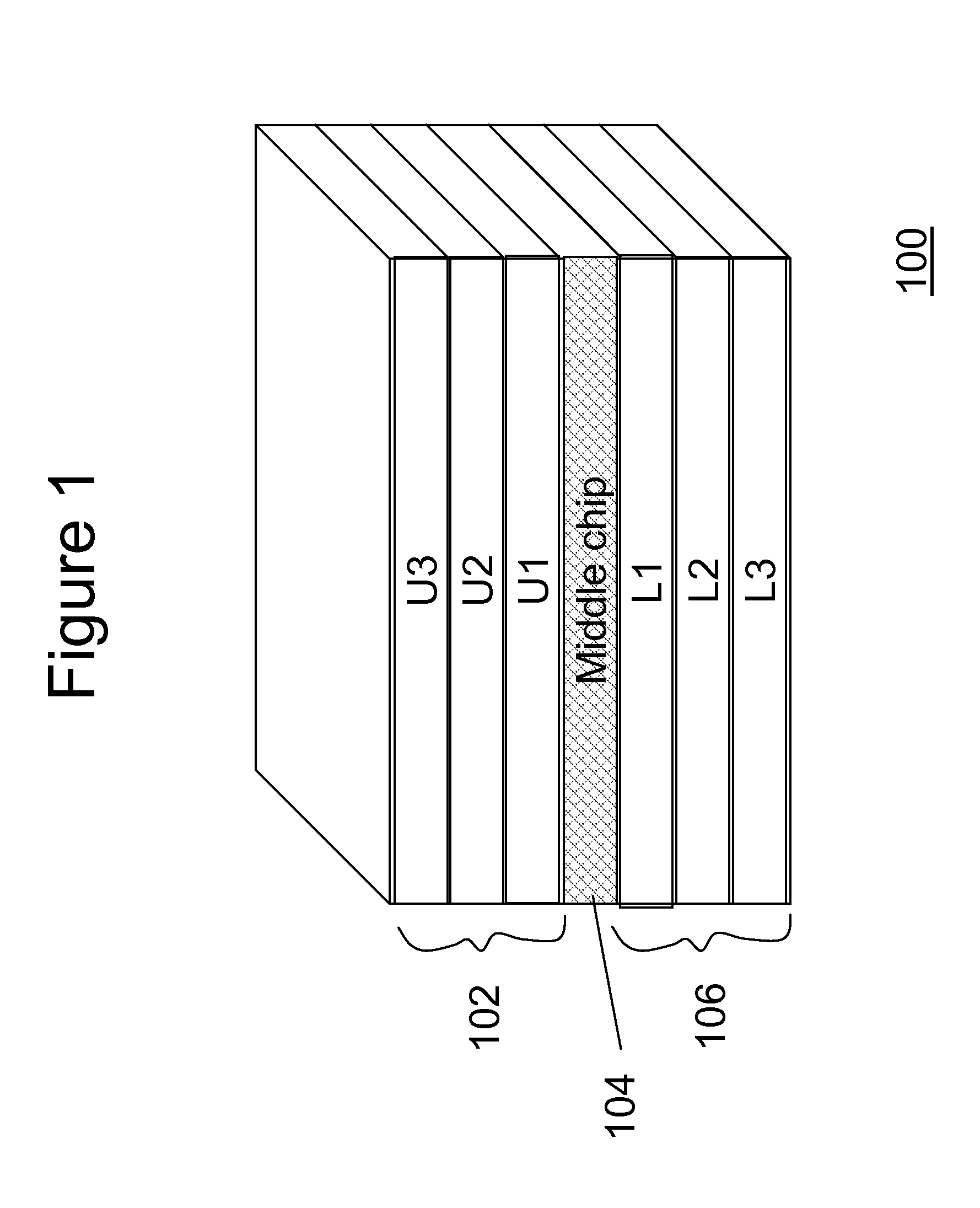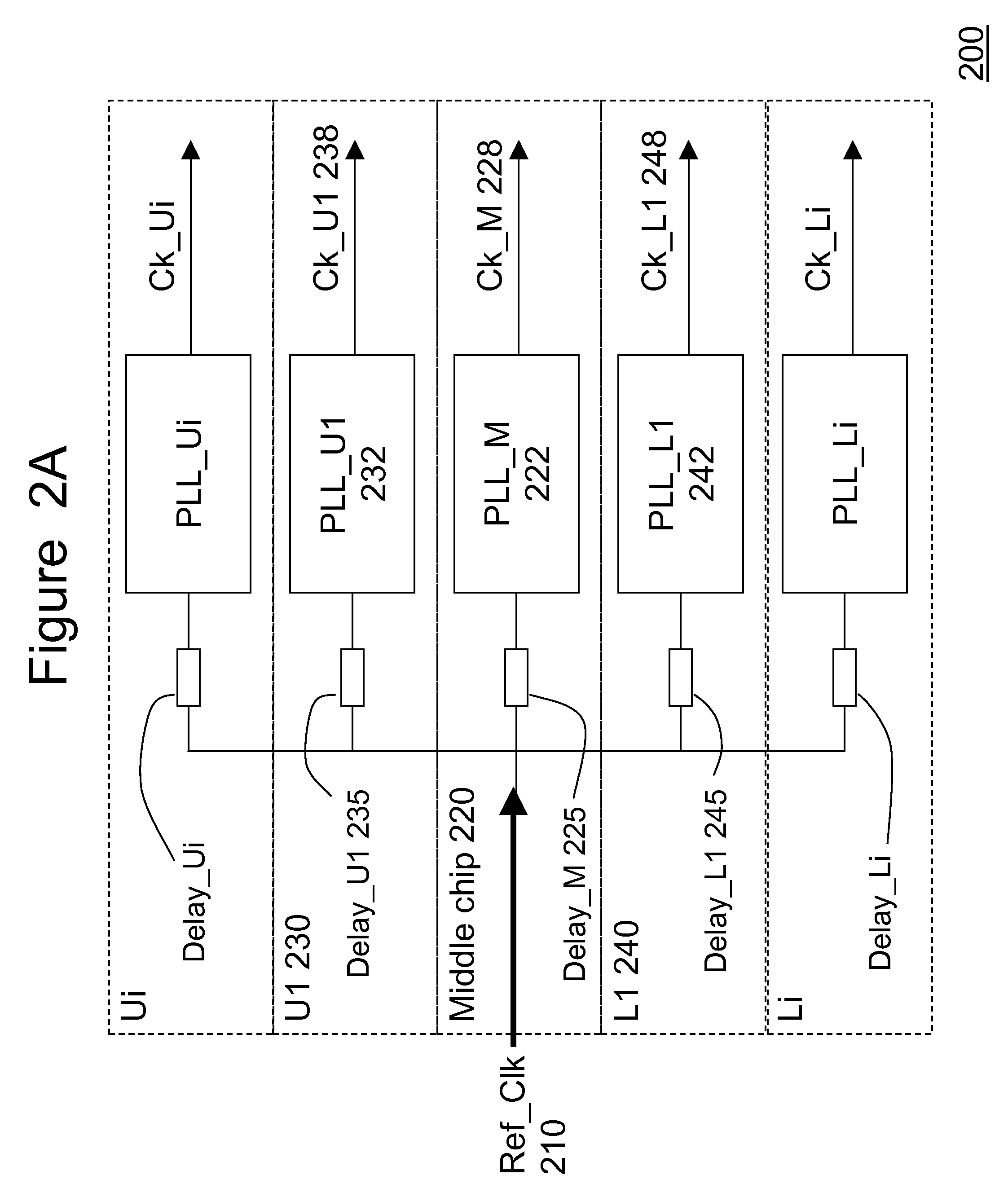Three-dimensional chip-stack synchronization
a chip-stack clock and three-dimensional technology, applied in the direction of generating/distributing signals, pulse techniques, instruments, etc., can solve the problems of critical synchronization between chips, difficulty may not necessarily extend to all chip packages, etc., to minimize clock skew and clock jitter, the effect of minimizing clock skew
- Summary
- Abstract
- Description
- Claims
- Application Information
AI Technical Summary
Benefits of technology
Problems solved by technology
Method used
Image
Examples
Embodiment Construction
[0028]The present invention and the various features and advantageous details thereof are explained more fully with reference to the non-limiting embodiments that are illustrated in the accompanying drawings and detailed in the following description of embodiments of the invention.
[0029]Referring to FIG. 1, there is shown an embodiment of a stacked chip structure 100. Although seven chips are shown, it is to be understood that other number of chips may be stacked to form the chip stack. In this example, a central reference clock is preferably placed in a middle chip 104 and a plurality of reference clock signals are routed to three upper chips 102 (U1, U2 and U3) (“child chip”) and three lower chips 106 (L1, L2 and L3) (“child chip”).
[0030]In general, such chips may be fabricated at the wafer level with standard devices and circuits formed in layers of the front-end of line (FEOL). Interconnects and dielectrics are then formed in layers of back-end of line (BEOL). All the chips are ...
PUM
 Login to View More
Login to View More Abstract
Description
Claims
Application Information
 Login to View More
Login to View More - R&D
- Intellectual Property
- Life Sciences
- Materials
- Tech Scout
- Unparalleled Data Quality
- Higher Quality Content
- 60% Fewer Hallucinations
Browse by: Latest US Patents, China's latest patents, Technical Efficacy Thesaurus, Application Domain, Technology Topic, Popular Technical Reports.
© 2025 PatSnap. All rights reserved.Legal|Privacy policy|Modern Slavery Act Transparency Statement|Sitemap|About US| Contact US: help@patsnap.com



